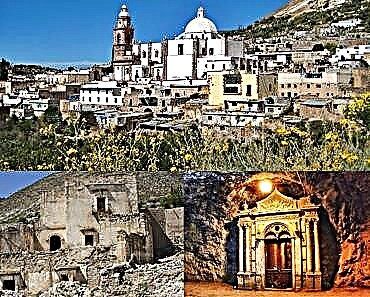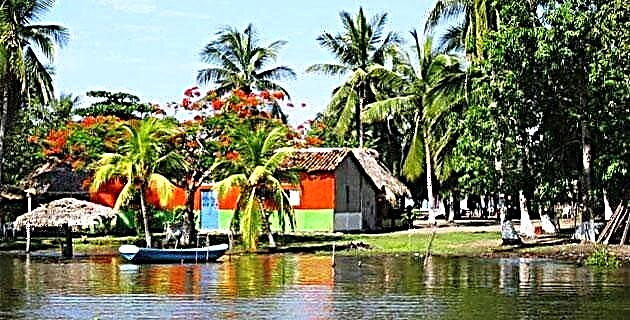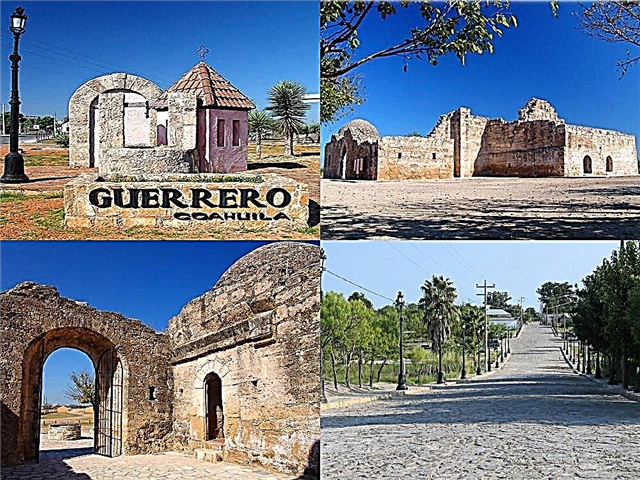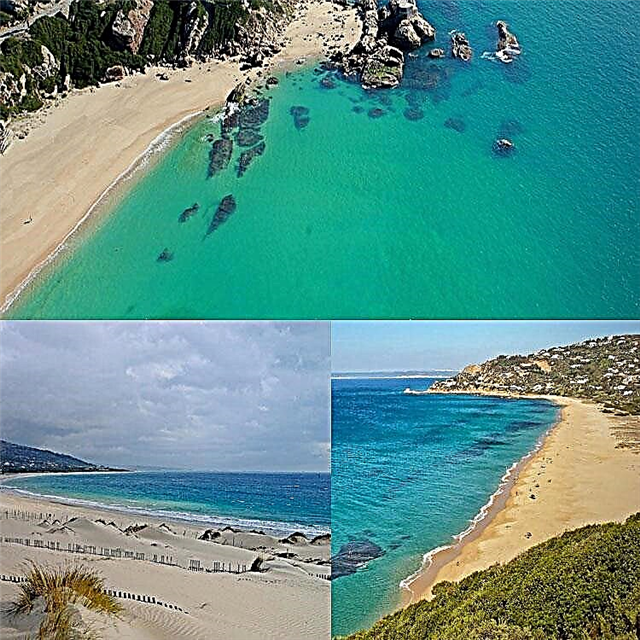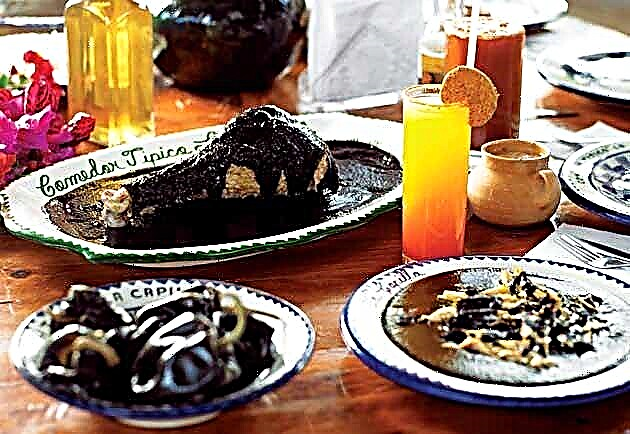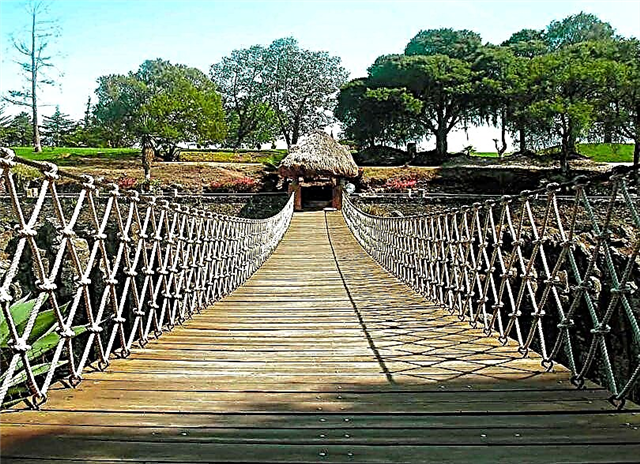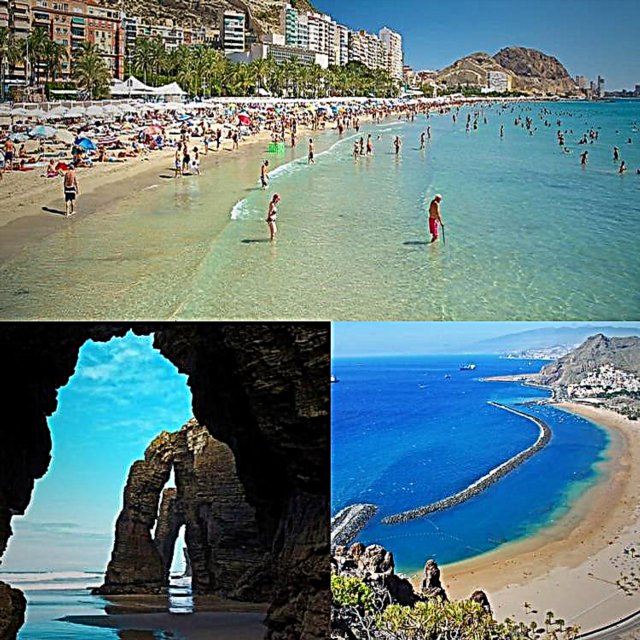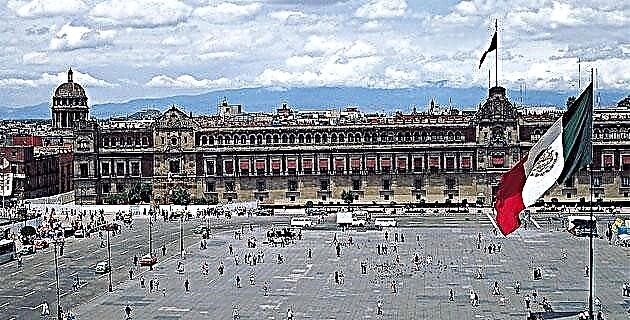
Mexico City, the main population center of the country, has been the place where throughout history civil and religious powers have concentrated.
In pre-Hispanic times it was inhabited by Mexica tribes from the mythical Aztlán, who settled in the place indicated by the ancient prophecy: a rock where there will be a cactus and on it an eagle devouring a snake. According to historical data, the Mexica found that place and settled there to give it the name of Tenochtitlan; Some scholars have been inclined to think that that name comes from the nickname of the priest who guided them: Tenoch, although it has also been given the meaning of "the divine tunnel where Mexltli is."
It was the year 1325 when the islet began to be populated, beginning the construction of a small ceremonial center to which, with the passage of time, palaces, administrative buildings and roads that linked it to the mainland with the towns of Tepeyac, Tacuba, Iztapalapa and Coyoacán. The unusual growth of the pre-Hispanic city came to have an exceptional urban structure, with complex systems of chinampas built on the lake bottom of the valley, the aforementioned roads and canals for navigation that combined stretches of water and land, as well as bridges and locks to regulate the waters. In addition to this, the economic and social progress that had been developed over almost 200 years was felt with great force in almost all cultural areas of the time. This accelerated evolution of the indigenous city was so remarkable that, upon the arrival of the Spanish invaders in 1519, they were amazed by the grandiose urban and social conception that was presented before them.
After several military sieges that culminated in the fall of the prodigious indigenous city, the Spaniards initially settled in Coyoacán, where Captain Hernán Cortés rewarded his subordinates with the loot obtained in Tenochtitlan, at the same time that the project of founding a capital city of the kingdom of New Spain, appointing the authorities and creating the first City Council. They first thought of founding it in the towns of Coyoacán, Tacuba and Texcoco, although Cortés decided that since Tenochtitlan had been the main and most important concentration of indigenous power, the site should also be the seat of government of New Spain.
At the beginning of 1522 the layout of the new Spanish city began, a company that was in charge of the builder Alonso García Bravo, who located it in the old Tenochtitlan, restoring the roads and defining the areas for housing and use of the Spaniards in reticular shape, its perimeter being reserved for the indigenous population. This had as limits, in an approximate way, the street of Santísima to the east, that of San Jerónimo or San Miguel to the south, that of Santa Isabel to the west and the area of Santo Domingo to the north, preserving the quadrants of the indigenous city to which the Christian names of San Juan, Santa María, San Sebastián and San Pablo were assigned. After that, the construction of buildings began, beginning with the "shipyards", a fortress that allowed the Spanish to protect themselves from possible indigenous uprisings. This fortress was possibly built between 1522 and 1524, in the place where the Hospital de San Lázaro would later be built. The new population still retained the name of Tenochtitlan for some time, although deformed by that of Temixtitan. The buildings that complemented it at the dawn of the Colony were another shipyard, limited by the streets of Tacuba, San José el Real, Empedradillo and Plateros, the town hall houses, the butcher shop, the jail, the shops for merchants and the plaza. where the gallows and the pillory were placed. Thanks to the rapid development of the settlement, in 1548 it was granted its coat of arms and the title of “very noble, distinguished and loyal city”.
By the end of the 16th century, the incipient capital of New Spain had about 35 important buildings, of which very few were preserved due to the modifications and reconstructions that they suffered. Thus, for example, in 1524 the temple and convent of San Francisco, one of the oldest; the convent was sectioned in later times and the temple was modified in the eighteenth century adding a Churrigueresque façade. There is also the San Idelfonso school, founded in 1588 and rebuilt by Father Cristóbal de Escobar y Llamas in the first half of the 18th century, with solemn façades of the incipient Churrigueresque style. Another of these buildings was the Santo Domingo temple and convent complex, the first of the Dominican order in the country; It is known that the temple was consecrated in 1590 and the original convent replaced by another one built in 1736 in the Baroque style, although the convent no longer exists. On the east side of the temple, the Palace of the Inquisition was built, a work of 1736 that replaced the court that was already there; the complex was built by the architect Pedro de Arrieta in a sober baroque style. It currently houses the Museum of Mexican Medicine.
The Royal and Pontifical University of Mexico, the oldest in America, now defunct, was founded in 1551 and its building was erected by Captain Melchor Dávila. Annexed to it is the Archbishop's Palace, inaugurated in 1554 and renovated in 1747. There are also the hospital and church of Jesus, founded in 1524 and one of the few buildings that partially conserve its original state. The site where they are located was pointed out by historians as the place where Hernán Cortés and Moctezuma II met when the former arrived in the city. The interior of the hospital housed the remains of Hernán Cortés for many years.
Another set of hospital and temple was that of San Juan de Dios, founded in 1582 and modified in the seventeenth century with a flared-type doorway of the temple in Baroque style. The Metropolitan Cathedral is by far one of the most historic buildings in the city. Its construction began in 1573 from a project by the architect Claudio de Arciniega, and it was concluded almost 300 years later with the intervention of men like José Damián Ortiz de Castro and Manuel Tolsá. The great ensemble came to integrate in its powerful structure diverse styles that went from the baroque to the neoclassical, passing through the Herrerian.
Unfortunately, the multiple floods that devastated the city at that time contributed to the destruction of a large part of the buildings of the 16th and early 17th centuries; However, the old Tenochtitlan, with renewed effort, would produce majestic buildings in subsequent years.

